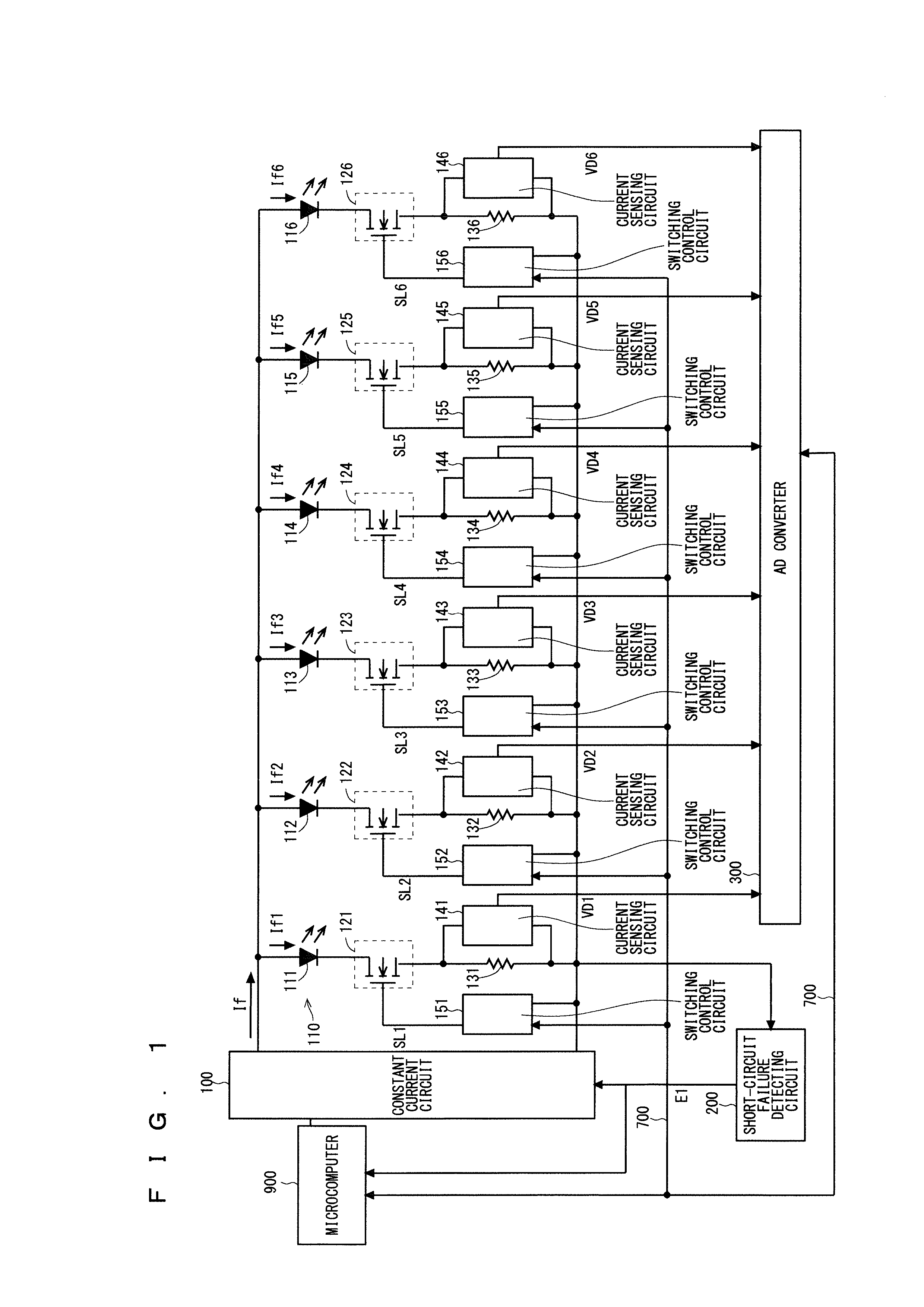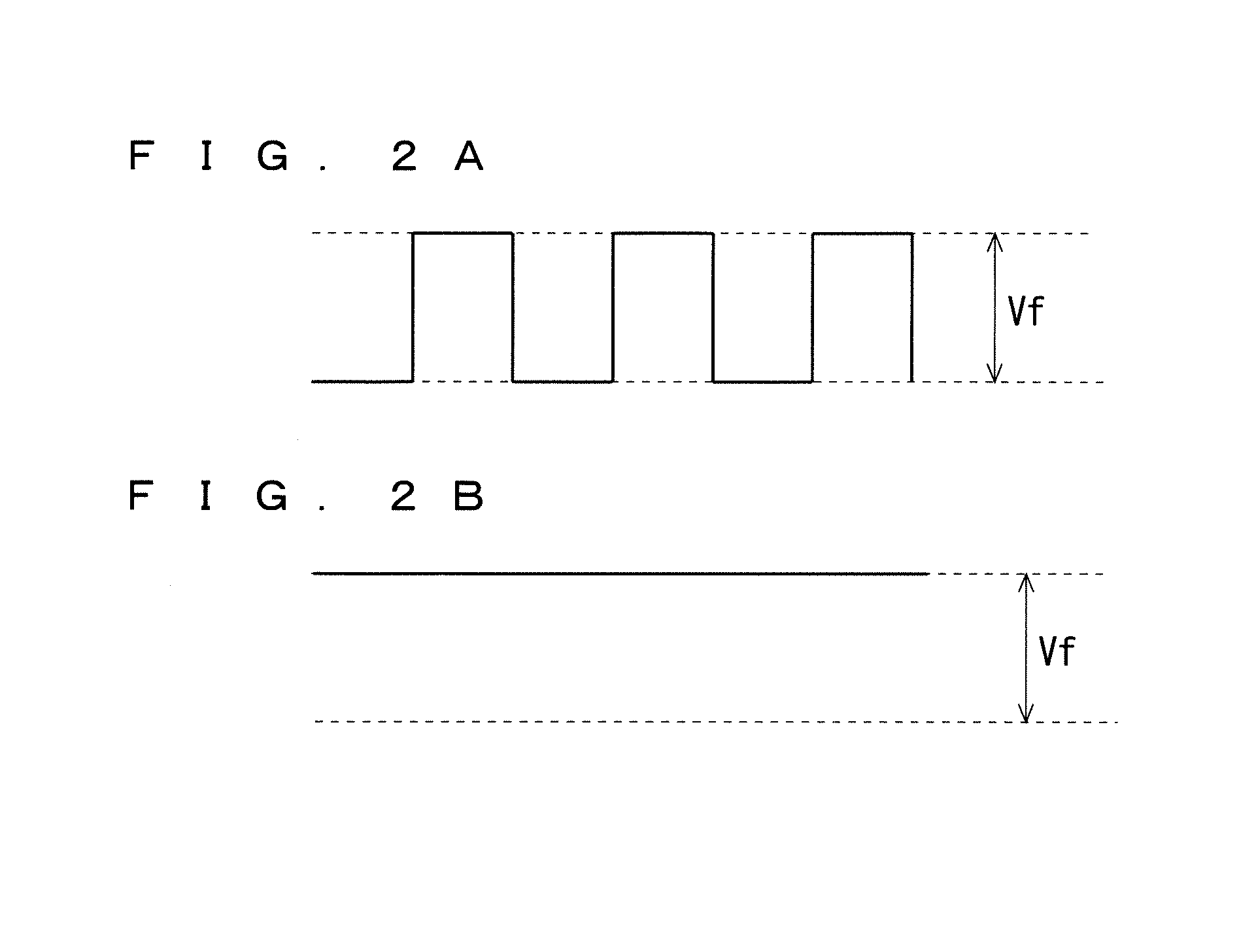Light source control device and light source control method
- Summary
- Abstract
- Description
- Claims
- Application Information
AI Technical Summary
Benefits of technology
Problems solved by technology
Method used
Image
Examples
first preferred embodiment
[0020]A light source control device of the present invention is to control multiple light sources connected in parallel. FIG. 1 is a block diagram showing an example of the structure of the light source control device according to a first preferred embodiment of the present invention. In the first preferred embodiment of the present intention described herein, the multiple light sources to be controlled are multiple (here, six) LEDs 111 to 116.
[0021]The LEDs 111 to 116 are elements to emit light in response to a current supplied to the LEDs 111 to 116. The LEDs 111 to 116 described herein are to emit light of the same color (one of red, green, and blue, for example). The LEDs 111 to 116 have the same specifications and the same characteristics in terms of the luminance of light to be emitted at the same current value, a forward drop voltage Vf and a rated current, for example. The LEDs 111 to 116 can be treated as one collection 110 of LED light sources.
[0022]The light source contro...
first modification
[0077]FIG. 9 is a flowchart showing the operation of a light source control device according to a first modification. The flowchart of FIG. 9 includes step S4a as an alternative to steps S4 and S5 of FIG. 6. The following mainly describes step S4a.
[0078]After receiving the detecting signal E1 at “H” from the short-circuit failure detecting circuit 200 indicating detection of the occurrence of a short-circuit failure, the constant current circuit 100 switches from supplying the driving current If to the LEDs 111 to 116 to supplying a failure detecting current to the LEDs 111 to 116 in step 54a. Specifically, if receiving the detecting signal E1 at “H” indicating detection of the occurrence of the short-circuit failure, the constant current circuit 100 does not stop supplying a current once but it supplies the failure detecting current to the LEDs 111 to 116 immediately.
[0079]This light source control device of the first modification supplies the failure detecting current independent...
second modification
[0080]The aforementioned light source control device can still provide an appropriate luminance even if a short-circuit failure occurs in any of the LEDs 111 to 116. However, a failure that might actually occur include not only a short-circuit failure but also an open-circuit failure. If any of the LEDs 111 to 116 goes out due to an open-circuit failure, a rated current or a current higher than the rated current flows into an LED not subjected to an open-circuit failure. This might cause a failure also in the LED not subjected to an open-circuit failure. As described below, in a second modification, even if an open-circuit failure occurs in any of the LEDs 111 to 116, an appropriate current can still be supplied to an LED not subjected to an open-circuit failure.
[0081]FIG. 10 is a flowchart showing the operation of a light source control device according to the second modification. The flowchart of FIG. 10 includes steps from S21 to S27 in addition to the steps in the flowchart of F...
PUM
 Login to View More
Login to View More Abstract
Description
Claims
Application Information
 Login to View More
Login to View More - R&D
- Intellectual Property
- Life Sciences
- Materials
- Tech Scout
- Unparalleled Data Quality
- Higher Quality Content
- 60% Fewer Hallucinations
Browse by: Latest US Patents, China's latest patents, Technical Efficacy Thesaurus, Application Domain, Technology Topic, Popular Technical Reports.
© 2025 PatSnap. All rights reserved.Legal|Privacy policy|Modern Slavery Act Transparency Statement|Sitemap|About US| Contact US: help@patsnap.com



